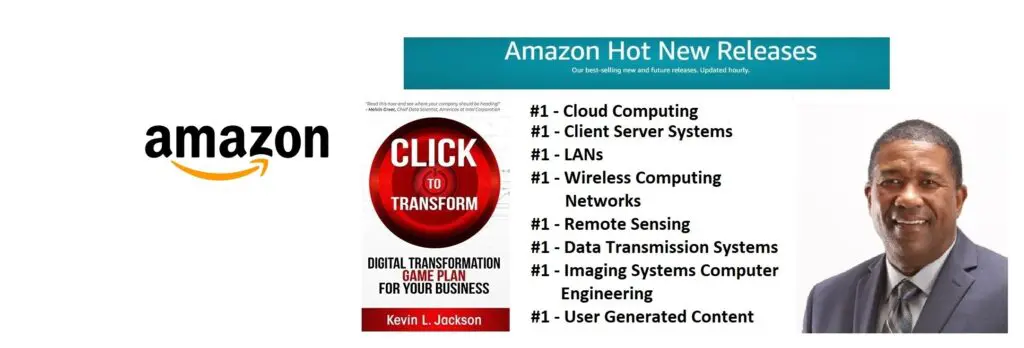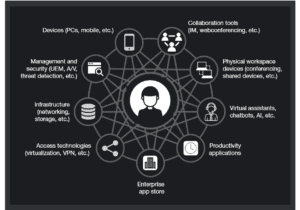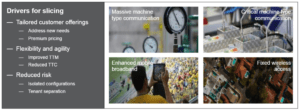Twitter Feed
SourceConnecte! Marketplace With A Mission
Earlier this year, GC GlobalNet launched a new breed of B2B e-commerce sites. Curated by Kevin L. Jackson, SourceConnecte (with an “eâ€) went live with three strategic goals in mind: Efficiently leverage modern…
Potential vs. Reality: Is Edge Computing Real?
Edge computing provides compute, storage, and networking resources close to devices generating traffic. Its benefits are based on an ability to provide new services capable of meeting stringent operational requirements…
Enabling Digital Transformation
Digital transformation integrates technology into all areas of an organization’s business or mission. Its fundamental purpose is to create and deliver innovative and industry-changing products and services to a global…
The ThinkShield Story Part 1: The Challenge
The cybersecurity challenge seems to be growing daily. Threats are becoming more sophisticated, and attacks are becoming more destructive while the corporate world’s response seems to resemble a deer…
CIO dream team: Who’s in and why?
Today’s CIO navigates the twin challenges of enabling new business models and managing rapid technological change. Cloud computing strategies are now table stakes. CIOs must make complex decisions about using…
Digital Transformation and the Mainframe
Digital transformation infuses digital technology into all areas of an organization’s business or mission. Its fundamental purpose is to create and deliver innovative and industry-changing digital products and services to…
Composable Architecture Q&A. Are you ready?
Q: Is it time for my company to jump on the composable architecture bandwagon? A: Composable architectures are quickly becoming essential to the modern enterprise. Citing a recent Forrester study:…
Increase Productivity by Reducing Technology Distraction: Lessons from Forrester Research
Workplace productivity is hurt every day by the very technology developed and purchased to improve it. Forrester announced this surprising conclusion in their latest “How To Wake Up From The Nightmare…
Unveiling the end-to-end capabilities for the networked society
An Interview with Henrik Basilier By Kevin L. Jackson The telecom industry is rapidly moving towards a future in which networks must have the capabilities of delivering services with the…
AT&T Finance Solutions GM on Shrimping, Software, and CX
Helping clients address the trends and challenges presented by the Financial Services industry is the main focus for René Dufrene in his role as General Manager of Finance Solutions at…
The Achilles heel of every transformative business model is their reliance on ever increasing amounts of data that need to be transported quickly across wide area networks and processed at edge computing end points. To meet this expected demand, the global telecommunications industry is rapidly moving toward a future in which networks must have the agility, flexibility, and scalability to deliver aggregated capabilities through fully programmable networks.
Since the late 1970s, new generations of technology and wireless standards have been introduced every decade through the current transition between 4G and 5G capabilities. Limited data capability was provided using circuit-switching under the European Telecommunications Standards Institute (ETSI) Global System for Mobile Communications (GSM) standard. Improved data rates were brought to the market in the late 1990s by using 2.5G and 2.75G technology, which were named GPRS (general packet radio service) and EDGE (enhanced data rates for GSM Evolution). The introduction of the LTE network later set the standard for high-speed wireless communications on mobile devices and data terminals.
Historically, sovereign nations have managed their telecommunications networks as national assets.
The political negotiations that drove that history led to underlying technological choices and today’s
heated international competition around 5G network deployments. In fact, western nations fear that China’s Huawei Technologies’ dominance of 5G technology could give the Chinese government backdoor access to Western mobile networks and the application. This international competition will determine the availability of specific technologies and telecommunications resources in each geographic region.
For 5G networks, data transfer speed, volume, and latency depend on the spectrum bands used and the network usage context (fixed or mobile). MmWave spectrum is a high-frequency technology that lies between 30 GHz and 300 GHz. It is attractive because its shorter wavelengths create narrower beams, which provides better resolution and security for data transmission. A 5G mmWave system requires a significant infrastructure build but could reap the benefits of data transferred at up to twenty times the speed of current 4G LTE networks. MIMO (multiple-input and multiple-output) increases throughput by using high-quality signals to receive multiple data streams at a reduced power per stream. Massive MIMO can multiply the capacity of a wireless connection without requiring more spectrum, which could potentially deliver a fifty-fold increase in the future.
These network capabilities are substantially superior to previous wireless technology generations and have subsequently set off the rapid development of many new application requirements and functions. With this new infrastructure, application components are placed in an optimal location to use compute and data storage services of the distributed cloud. The distributed cloud approach increases capacity, availability, and coverage while also limiting data transfer requirements. A distributed cloud solution enables edge computing by using micro and small data centers. Application developers must learn how to exploit these new design requirements to deliver ever increasing value to their end users.
Learn more about digital transformation innovation: pick up a copy of my new book, Click to Transform!Â

Cloud Computing
- CPUcoin Expands CPU/GPU Power Sharing with Cudo Ventures Enterprise Network Partnership
- CPUcoin Expands CPU/GPU Power Sharing with Cudo Ventures Enterprise Network Partnership
- Route1 Announces Q2 2019 Financial Results
- CPUcoin Expands CPU/GPU Power Sharing with Cudo Ventures Enterprise Network Partnership
- ChannelAdvisor to Present at the D.A. Davidson 18th Annual Technology Conference
Cybersecurity
- Route1 Announces Q2 2019 Financial Results
- FIRST US BANCSHARES, INC. DECLARES CASH DIVIDEND
- Business Continuity Management Planning Solution Market is Expected to Grow ~ US$ 1.6 Bn by the end of 2029 - PMR
- Atos delivers Quantum-Learning-as-a-Service to Xofia to enable artificial intelligence solutions
- New Ares IoT Botnet discovered on Android OS based Set-Top Boxes










